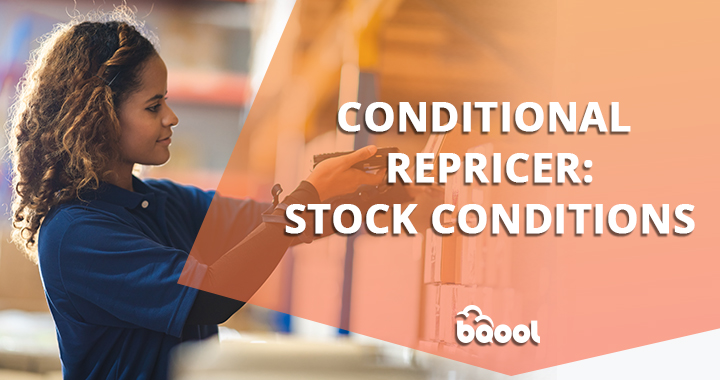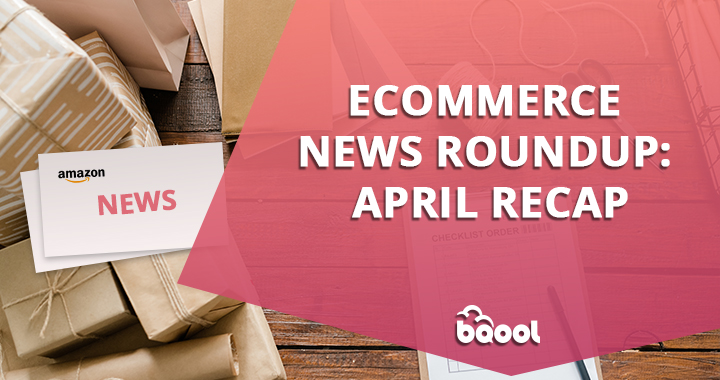Conditional Repricer: Reprice on Inventory Conditions

Managing inventory could be difficult especially when you have many items. Some of your items may move faster or slower than others due to seasons, demands and other factors. Because of this, storage fees might cost you more than you think especially if you are a FBA seller.
Today, BQool explains to you the different repricing strategies you can employ to reduce the number of slow-moving inventory and improve your inventory performance index (IPI) so that you can better manage your inventory and sell more on Amazon.
The Basics:
Usually when it comes to inventory management, you need to deal with inventory age and days of supply.
Inventory Age looks at how long your products have been sitting in the warehouse. If you have products that are not selling out fast enough, we call it “slow moving inventory” or “dead inventory”.
Days of Supply is the estimated number of days that your current inventory supply will last based on the projected demand for your product.
Now, before we get too far ahead, here are the AI repricing rules that will be implemented in conjunction with conditional repricer for advanced inventory repricing strategies.
AI Sales Maximizer: Reprice aggressively to maximize sales.
AI Sales Booster: Reprice dynamically to generate sales.
AI Equalizer: Reprice moderately to balance sales and profit.
AI Profit Booster: Reprice incrementally to boost profit.
AI Profit Maximizer: Reprice aggressively to maximize profit
Let’s look at different scenarios to understand in which cases you can use Inventory Age and Days of Supply to reprice your products.
BQool repricer allows you to set hundreds of combinations in your conditional repricing strategy.
Inventory Age
Scenario 1: You Have High Value Products
You are selling perfume; those items are high valued items, and they are moving very slowly. Let’s say the price of your perfume is 200 dollars and you have 50 bottles of this perfume in your inventory up to 90 days and you hope to move them as soon as possible.
The objective is to liquidate your dead inventory and avoid paying long term storage fees and hurting your IPI score.
To proceed, you must select the number of days that you wish to start liquidating your old inventories, usually we recommend this to items that have been sitting in the warehouse for more than 90 days. Of course, your milage may vary depending on your sales goals and the nature of your products. Some sellers would even choose to liquidate items that have been in the warehouse between 30-60 days. If your products are perishable, we recommend you configure your repricing strategy to be sales driven, however if your product is relatively new and have been in the warehouse less than 60 days, you can choose AI strategy like AI Profit Booster, AI Profit Maximizer to sell your products at a higher profit margin.
In this case you can run a promotion by implementing Sales Booster Rule, the rule will focus on lowering your price.By implementing Sales Booster Rule, that will help you to Reprice dynamically and generating sales while keeping some decent profits.

When you set up Inventory Age rule, you set up one main condition Inventory Age then you can add two sub conditions:
For example, you can choose between 271 & 365 days and set up the rule AI Sales Maximizer then add 2 sub conditions: units sold greater than 20 units sold the last 7 days and storage type. You have many combinations of main and sub conditions.

Scenario 2: You Have Perishable Products
You must sell fast because of the expiry date of your items. Some of your products might expire within 90 or 180 days.
For example, you sell instant soluble coffee, and you have 500 units in your inventory and the expiry date is in 3 months. You must find a way to liquidate them fast. In this situation we recommend you focus on the sales velocity and not on the profit. You should set up Sales Maximizer rule as a main condition and lower your price to sell them off.
You can adjust your strategy by implementing one or two sub conditions such as listing at lowest price for the last 10 days and the available quantity.

Finally, if you do not want to use an AI Rule you can set up a mine price value for BQool repricer to automate your targeted new min price so it can try to align your price to that of your competitors who are putting out low price offers.

Scenario 3: You have seasonal products
If you have sent your seasonal products to the FBA warehouse early whether is by your decision or by Amazon’s requests, you can take advantage of the Inventory Age condition to automatically switch to suitable holiday repricing strategies for products that perform well in holiday sales (Christmas, Valentine’s Day, Easter, Prime Day etc.). You can also set specific conditions to liquidate leftover seasonal products after holiday seasons.
Scenario 4: You have meltable products
Meltable product refers to all heat-sensitive products and you can’t sell them during summertime by Amazon. If summertime is approaching and you still have meltable product in your inventory you can use inventory age condition to liquidate them before being prohibited to sell them.
Days of Supply
Days of supply is a main condition that you can set up to know how many days it will take to sell off all your inventory based on your past sales performance. Usually, we recommend you use this condition for replens and perishable products.
Scenario 1: Replens Product
When you do replens, this rule can indicate when you would be out of stock and allow you to forecast how many units you should send to FBA warehouse in your next batch of shipments. Days of supply enables you to have a better restock management for replenish products.
For example, your current inventory of shampoo (replen product), and you want to use days of supply condition to predict how many days you will need to liquidate the stock you already have in the Amazon warehouse using the previous sales performance to know how fast it is going to be sold.
Scenario 2: Fast Moving and Product with Short Shelf Life
Fast moving products normally would associate with products with a high demand. With fast-moving and products with short shelf life you do not need to worry too much about product stagnation in your inventory, but you need to focus on your inventory management and sales performance.
We recommend you use days of supply condition to know your restock time.

Finally, you can also use days of supply as an indicator to track your product performance and see if the product is still worthy to sell.
The Sub Conditions
Besides the main conditions that we have explained, such as Inventory Age and Days of supply you can add sub conditions to sharpen your repricing strategy when you set up the Conditional Repricer. The Sub conditions are not main conditions in Inventory Age and Days of Supply modes.
Available Quantity is the number of sellable units that you have in stock to fulfill orders. Available units don’t include units that are pending removal.
Inbound Quantity is the number of units on their way to the FBA warehouse.
Storage Type: storage sub condition uses the nature of the products, there are 5 categories.
Estimated Excess: it is an Amazon forecast that indicates which product(s) in your inventory will cost you more to keep and pay storage fee than to reduce by repricing or liquidating.
Estimated Long Term Storage Fee: This rule gives the estimated long term storage fee when your inventory has been in fulfilment center for more than 365 days.
Estimated Long Term Storage Units: It is the estimated number of units that will be considered as long-term storage fees on your next charge date, assuming you did not realize more sales.


We have specifically designed Conditional Repricer to give you more flexibility in your repricing strategy and help you to spot and sell off the products that may compromise your sales performance so you can improve your IPI score. From now on, you have more customizable options that adapt to your needs.
Finally, with our Conditional Repricer you have different way of monitoring your stock and a better flexibility to reprice your listings on Amazon.








